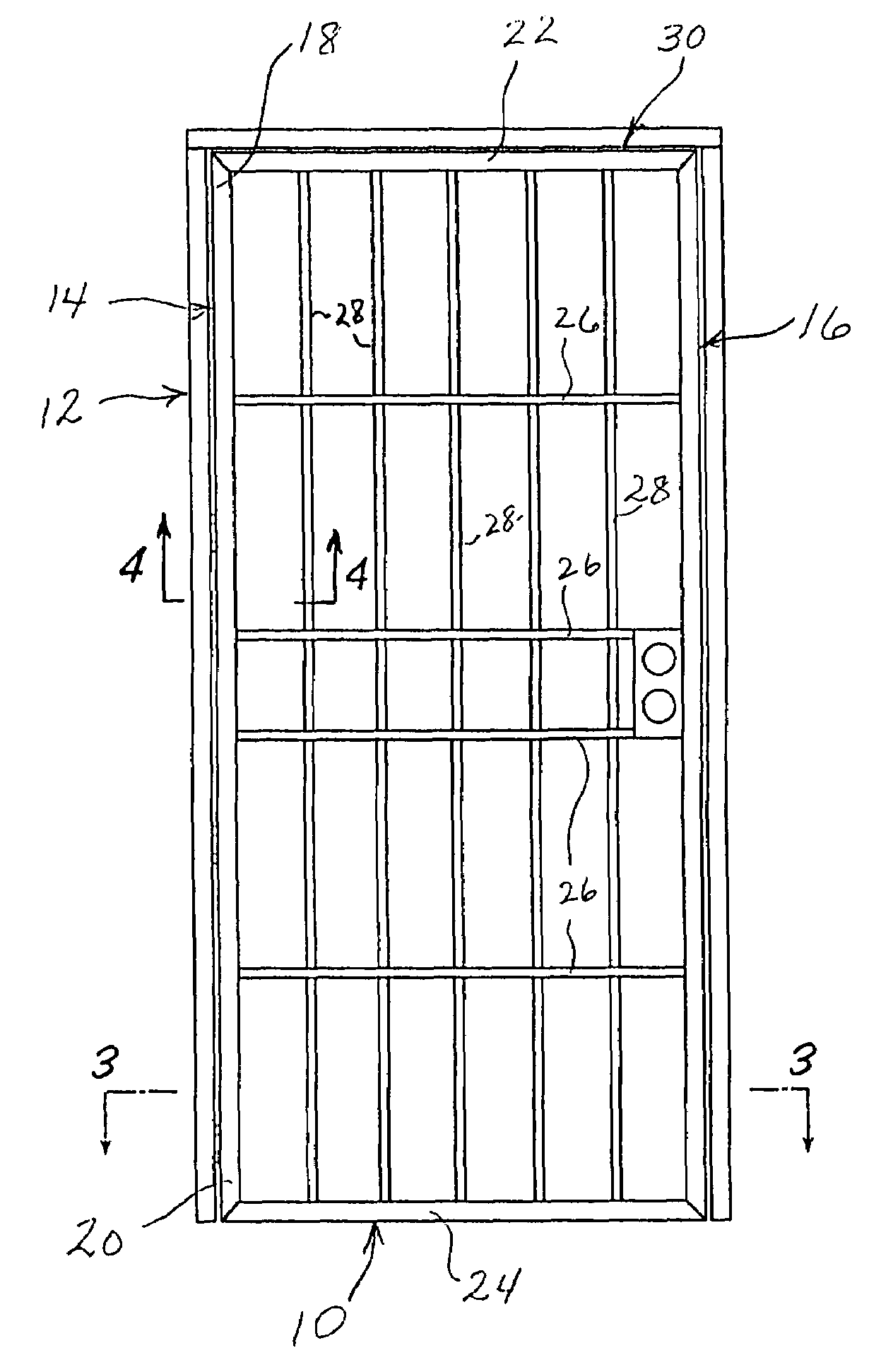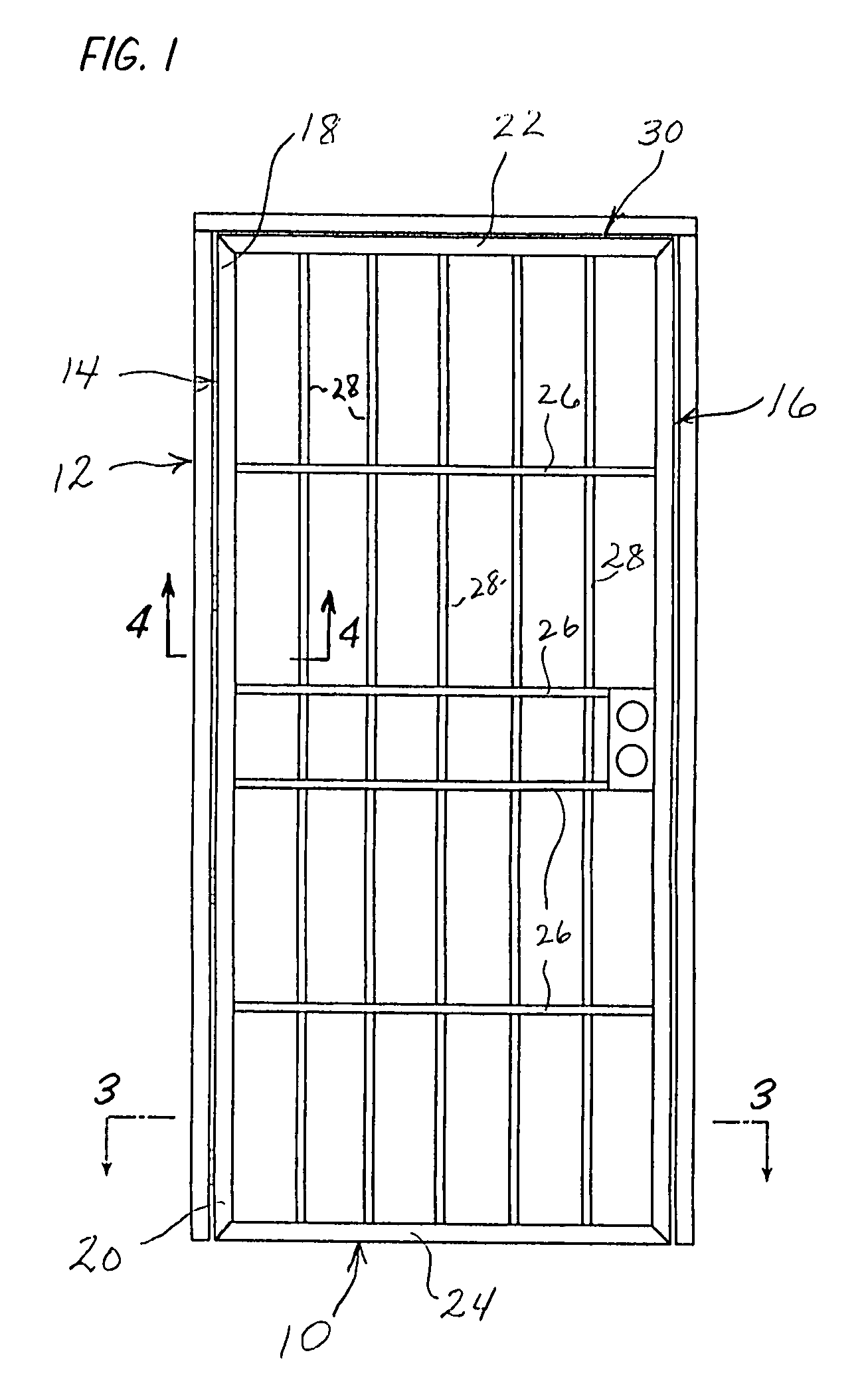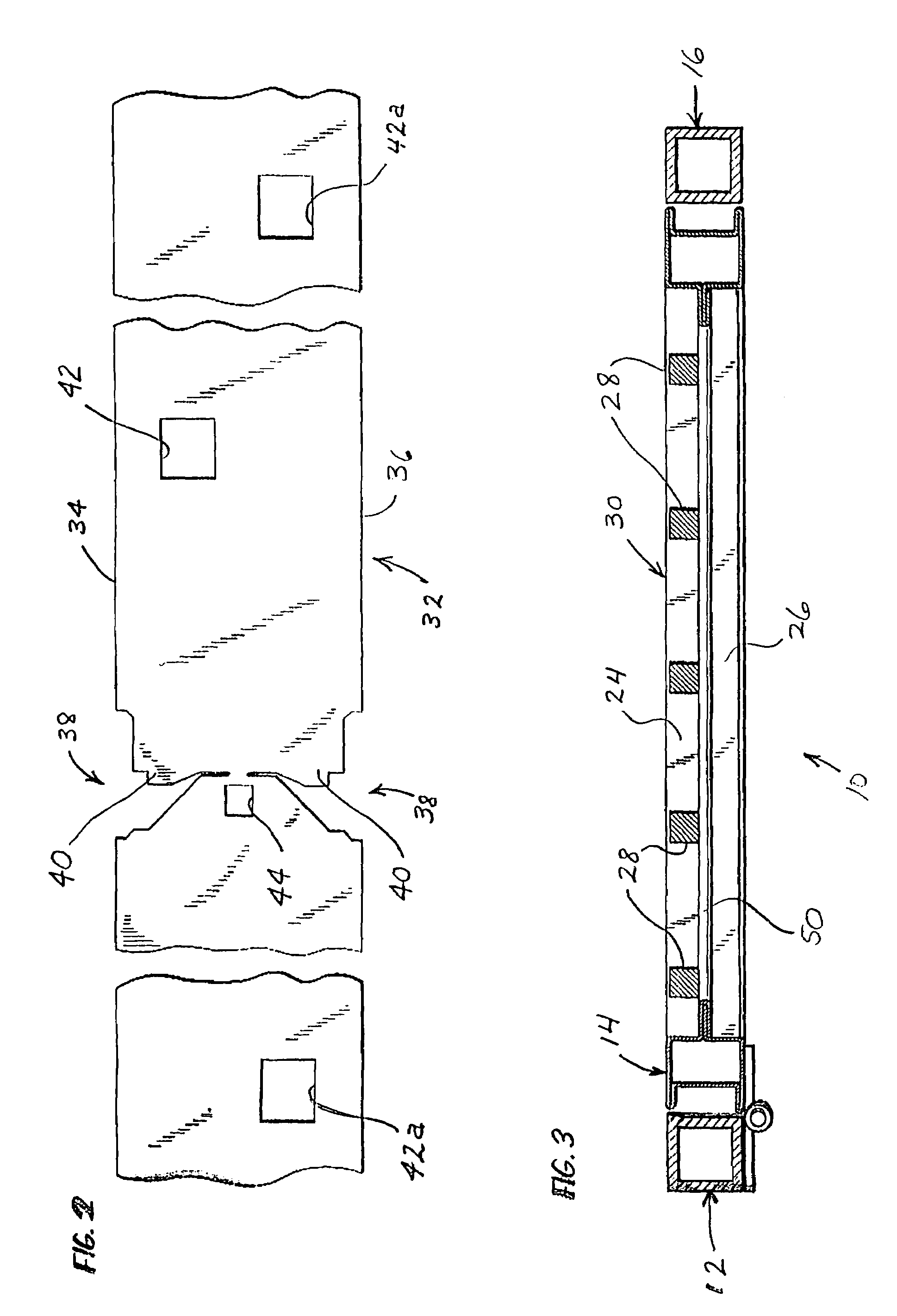Method of fabricating security door
a technology of security doors and manufacturing methods, applied in the field of security doors, can solve the problems that the operation of spot welding machines requires no particular skill, and achieve the effects of avoiding the need for skill and/or expense, strength and rigidity, and structural strength and rigidity
- Summary
- Abstract
- Description
- Claims
- Application Information
AI Technical Summary
Benefits of technology
Problems solved by technology
Method used
Image
Examples
Embodiment Construction
[0029]FIG. 1 illustrates a security door 10 fabricated according to the invention and mounted within a frame 12 in the manner in which the security door 10 is installed in a door opening in a building. The security door 10 is comprised of a mutually parallel pair of hollow, roll-formed sheet metal upright stiles 14 and 16 each having opposing extremities 18 and 20. The security door 10 also is formed with a hollow, roll-formed sheet metal upper transverse rail 22 and a corresponding lower transverse rail 24 of the same construction. The upper and lower rails 22 and 24 are collected to the extremities 18 and 20 of the upright stiles 14 and 16 and are oriented perpendicular thereto. Together the stiles 14 and 16 and the upper and lower rails 22 and 24 form a metal door perimeter frame 30. Steel security bars 26 one-half inch square extend between and are spot welded to the upright stiles 14 and 16. Other steel security bars 28 also one-half inch square extend between and are spot weld...
PUM
| Property | Measurement | Unit |
|---|---|---|
| thickness | aaaaa | aaaaa |
| thickness | aaaaa | aaaaa |
| perimeter | aaaaa | aaaaa |
Abstract
Description
Claims
Application Information
 Login to View More
Login to View More - R&D
- Intellectual Property
- Life Sciences
- Materials
- Tech Scout
- Unparalleled Data Quality
- Higher Quality Content
- 60% Fewer Hallucinations
Browse by: Latest US Patents, China's latest patents, Technical Efficacy Thesaurus, Application Domain, Technology Topic, Popular Technical Reports.
© 2025 PatSnap. All rights reserved.Legal|Privacy policy|Modern Slavery Act Transparency Statement|Sitemap|About US| Contact US: help@patsnap.com



